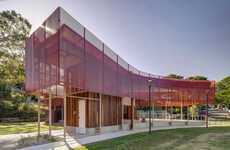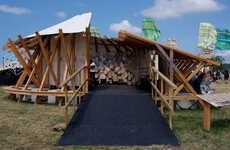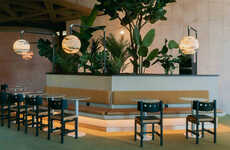



Brands launch third spaces that allow neighbors to connect with each other
Trend - Brands are creating "third places," a concept championed by sociologist Ray Oldenburg, to offer social spaces distinct from home and work. These welcoming environments foster regular connections among people through shared interests or activities, responding to the consumer's quest for community and spontaneity.
Insight - The remote work boom and social shifts are fueling a consumer desire for "third places" – hubs beyond work and home for connection. Craving escape from car-dependent suburbs and planned social activities, consumers seek spaces for spontaneous interaction and emotional support. Brands that successfully tap into this trend do so by crafting casual, community-focused havens. These spaces cultivate a sense of belonging and unity, drawing people together over shared experiences and interests, thereby winning the hearts and loyalty of consumers.
Insight - The remote work boom and social shifts are fueling a consumer desire for "third places" – hubs beyond work and home for connection. Craving escape from car-dependent suburbs and planned social activities, consumers seek spaces for spontaneous interaction and emotional support. Brands that successfully tap into this trend do so by crafting casual, community-focused havens. These spaces cultivate a sense of belonging and unity, drawing people together over shared experiences and interests, thereby winning the hearts and loyalty of consumers.
Workshop Question - How can your brand create a third space that fosters community connections and provides a sense of belonging for consumers in today's increasingly isolated society?
Trend Themes
1. Sustainable Pavilion Design - There is an increasing emphasis on creating environmentally sustainable pavilions using materials like timber and bamboo for durable and aesthetic community spaces.
2. Multi-functional Community Spaces - Designers are focusing on multi-use community hubs that serve as both functional spaces for events and social interaction points, enhancing community engagement.
3. Passive Environmental Control - Innovative designs incorporating passive heating and natural ventilation reflect the growing trend towards sustainable and climate-responsive architecture.
Industry Implications
1. Architecture - Architects are increasingly designing spaces that integrate sustainability and community use, creating versatile and environmentally-conscious structures.
2. Urban Planning - Urban planners are incorporating third spaces into city designs to foster social interaction and community building in metropolitan areas.
3. Sustainable Materials - The rise of eco-friendly construction materials is pushing industries to innovate in the use of timber, bamboo, and other sustainable resources in public structures.
5 Featured, 45 Examples:
50,345 Total Clicks
Date Range:
Jun 23 — Mar 24
Trending:
Average
Consumer Insight Topics:














































